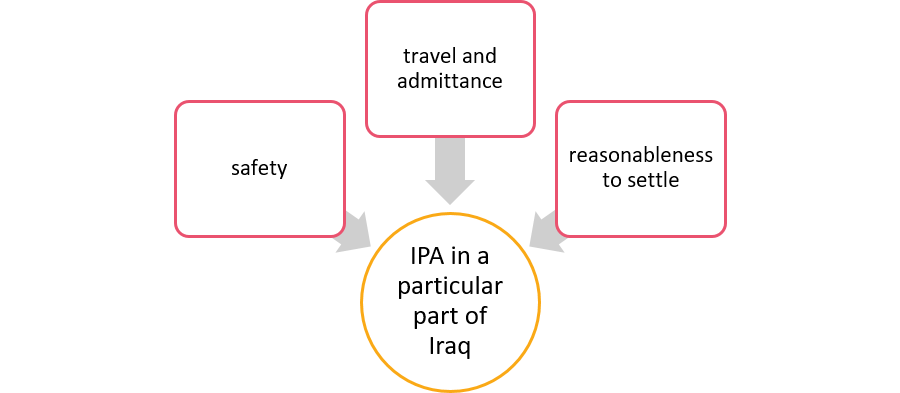IPA should only be examined after it has been established that the applicant has a well-founded fear of persecution or faces a real risk of serious harm and that the authorities or other relevant actors of protection are unable or unwilling to protect him or her in the home area. In such cases, if IPA applies, it can be determined that the applicant is not in need of international protection.
The required elements in order to apply Article 8 QD are:

| Figure 5. Internal protection alternative: elements of the assessment. |
In relation to these elements, when assessing the applicability of IPA, the case officer should consider the general situation in the respective part of Iraq, as well as the individual circumstances of the applicant. The burden of proof lies with the determining authority, while the applicant remains under an obligation to cooperate. The applicant is also entitled to submit elements to indicate that IPA should not be applied to him or her.
|
|
In this chapter, you will find further guidance on the elements:
|

